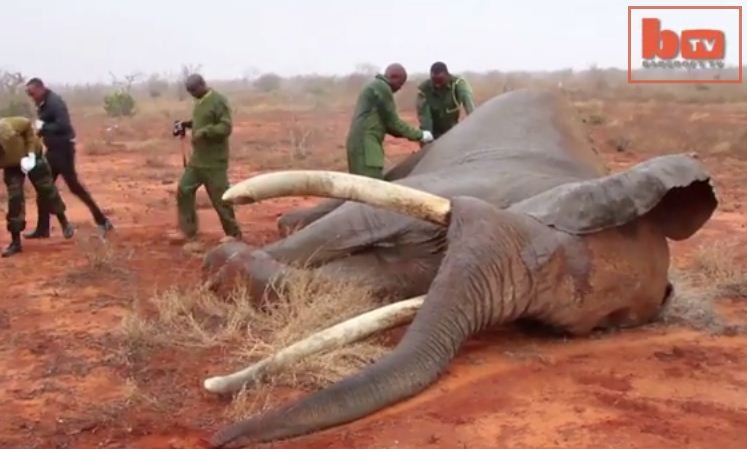Elephant hit by poacher's poisoned arrow dramatically saved by vets
Incredible footage of the rescue attempt in Kenya has emerged showing the bull being saved from a painful and drawn-out death

An African bull elephant which was struck by a poacher’s poisoned arrow made a quick recovery after vets in Kenya staged a dramatic air rescue.
The male elephant was observed limping through the Tsavo National Park on 15 September during routine air surveillance by a pilot from the David Sheldrick Wildlife Team (DSWT) – which has nine anti-poaching teams in the region in collaboration with the Kenya Wildlife Service.
Scroll down to see video
Medics rushed to the scene and sedated the bull so that it would fall to its side easily and give them enough space and time to remove the ivory poacher’s arrow.
Vets say it took just 30 minutes to clean the wound, administer long-acting antibiotics, and give the animal a revival drug.
“There are a number of factors that determine how quickly an elephant will die from a poisoned arrow,” Rob Brandford, Director of the DSWT, said.
“The freshness of the poison, the location of the arrow and how deeply it penetrated its quarry are some of the variables.
“It can take hours, weeks, or even months for the animal to perish.”
A video of the vets trying desperately to stem the spread of the poison in the elephant’s body has been released by Barcroft Media.
The helicopter was used to keep the elephant’s male friends at bay while the experts worked to remove the arrow.
“This was the second elephant that the Veterinary Unit saved that day, and the eleventh treated against poachers’ arrows in two weeks,” Mr Brandford added.
“Continued aerial and ground monitoring (in the worst cases, the team mark the treated elephant’s back with paint, which makes identification from the air easier) confirm that all 11 animals have since made a full recovery thanks to the quick reponse.”
According to DSWT, its team has four aircraft, a helicopter and four mobile veterinary units in the region, which all help to protect and treat animals caught up in the illegal activities of poachers. The team has arrested more than 1,000 poachers.
Join our commenting forum
Join thought-provoking conversations, follow other Independent readers and see their replies
Comments